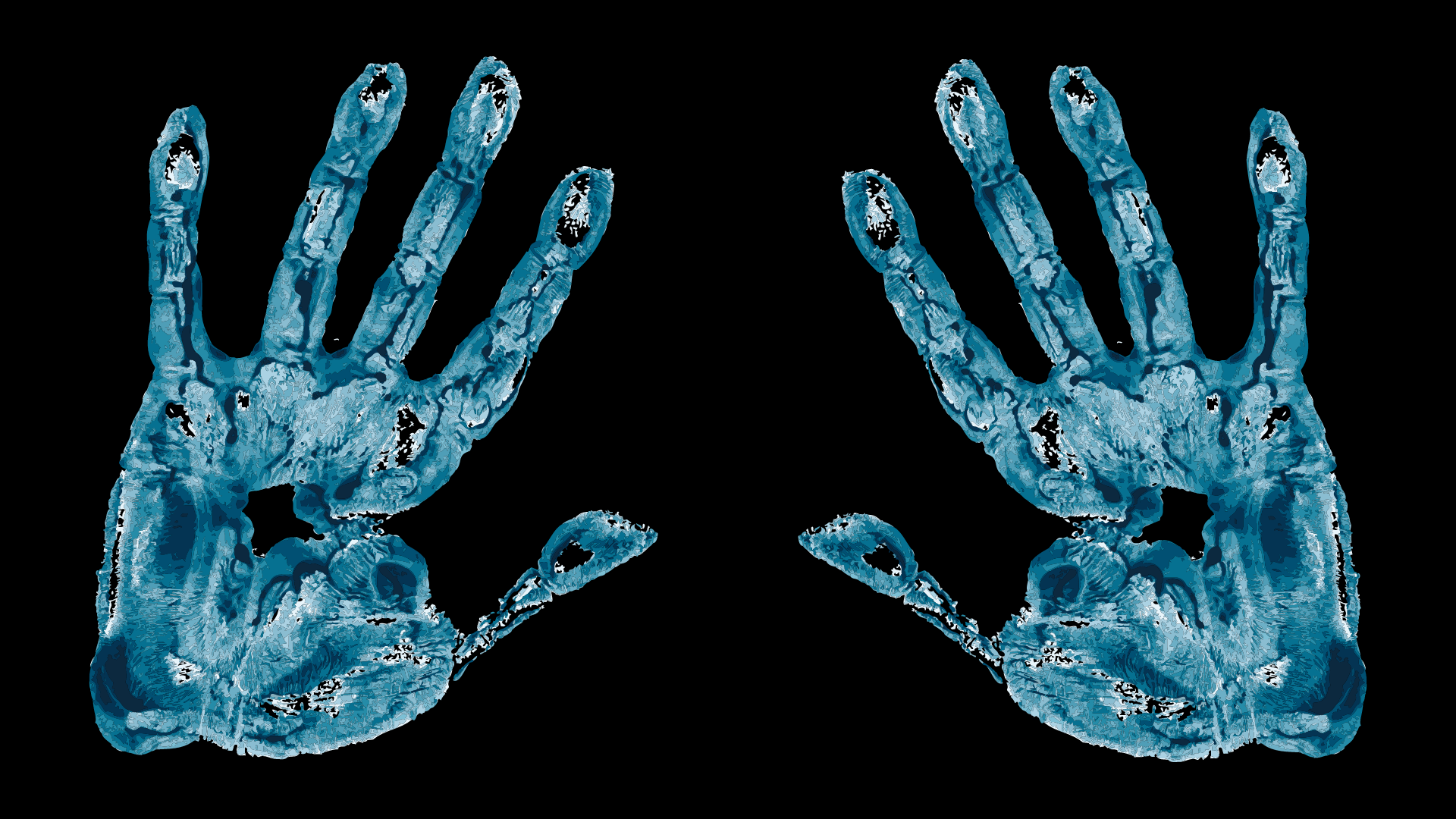By: Kathrine Pair

If you’ve watched any TV crime dramas such as CSI, chances are, you’ve seen investigators turn off the lights, draw the curtains, and use a chemical spray to coat a crime scene. This is luminol — a spray that illuminates with a blueish color when it comes into contact with the hemoglobin in blood. Sounds like magic, right? But we know that’s not the case.
So, what exactly is luminol, and how does it work?
Luminol (C8H7N3O2) is a compound that produces a chemical reaction effect known as chemiluminescence. This visual change occurs when the solution encounters the hemoglobin in blood, creating energy that causes the saturated area to emit a brilliant blue light.
Contrary to the portrayal of this process on daytime crime dramas, the use of a black light accessory to see the chemical reaction is not necessary during luminol testing. However, it is true that the room must be entirely dark to effectively observe and interpret the results. In other words, turning off the lights and drawing the curtains is necessary, so our favorite actors are doing something right!
Although luminol was first synthesized in 1902, it would be more than two decades before any scientist would explore how to use it.
In 1927, German scientists observed the chemiluminescence property of luminol when oxidized with an alkaline solution. However, no one had thought to test the chemical with blood as the catalyst.
Until, in 1937, German forensic scientist Walter Specht introduced the idea of using luminol as a “presumptive test” for blood detection at crime scenes. To test his theory and see if this was even possible, Specht conducted an experiment. He sprayed blood on bushes, stone walls, rusty iron fences, furniture, and other materials, leaving the blood to stay for 14 days. After the blood either dried, coagulated, or stained, Specht mixed a solution comprised of luminol, hydrogen peroxide, and sodium carbonate. This mixture was sprayed over all of the bloodied areas — and the result was groundbreaking.
The areas that had been bloodied and then sprayed were illuminated for approximately 10-15 minutes.
Further testing conducted by other scientists over the decades would confirm Specht’s findings: the older the blood stain, the more prominent and long-lasting the chemiluminescent reaction. This is a significant finding as it means that blood that has been wiped away decades before can still be detected. These studies and their subsequent results would change the investigation of crime scenes forever.
Technology has advanced, and criminals have become more innovative as time has passed.
When encountering a suspected crime scene, there may be no apparent signs that a crime occurred as some perpetrators attempt to cover their tracks. For example, suppose a woman has vanished, and her apartment appears to be untouched. In that case, it may not be immediately clear that she was attacked in her home.
But, if investigators have probable cause and use luminol on the scene, they may not be surprised to find blood spatter evidence that the naked eye can’t detect. This tool allows investigators to quite literally shed some light on what might have taken place.
While luminol sounds like a miracle investigative tool — it has notable drawbacks.
Today, with modern chemical compounds and mixtures, the effects of luminol typically last for around 30 seconds. Because of this, the solution might need to be reapplied to obtain sufficient photographs of the area in question.
Studies have shown that excessive luminol use can degrade the sample, making confirmatory testing impossible or inconclusive at best. To what extent the sample is contaminated depends on how old the blood is and what oxidizing components are used when mixing the luminol solution.
For this reason, luminol mustn’t be used unless it’s necessary to uncover what transpired.
Another drawback to using luminol in presumptive blood tests is that the compound can react with materials other than blood, eliciting a “false positive.”
Some of these false positives can be triggered by horseradish pulp, bleach, and iron. However, this presents only a minor issue, considering investigators should conduct further testing on all luminol-reactive samples.
But, these false positives could send detectives down the wrong rabbit hole. What if luminol reacts to old blood in a bathroom tub from a shaving mishap? Or if a kitchen sink glows blue because of detected blood — but it was from bloody meat?
Detectives can’t solely rely on luminol when building their cases. That said, it’s an invaluable tool that provides investigators with the advantage of seeing blood evidence that might otherwise be missed entirely.
As its name illustrates, luminol produces a light that can help tell a victim’s story. As technology advances, many look forward to seeing how this seemingly magic chemical might be improved to provide even more help in analyzing otherwise inconspicuous crime scenes.
Kathrine Pair is a missing persons advocate, and a scriptwriter for the Seriously Mysterious Podcast hosted by John Lordan. Kathrine is also a volunteer with the Polly Klaas Foundation, a charity devoted to preventing crimes against children.
